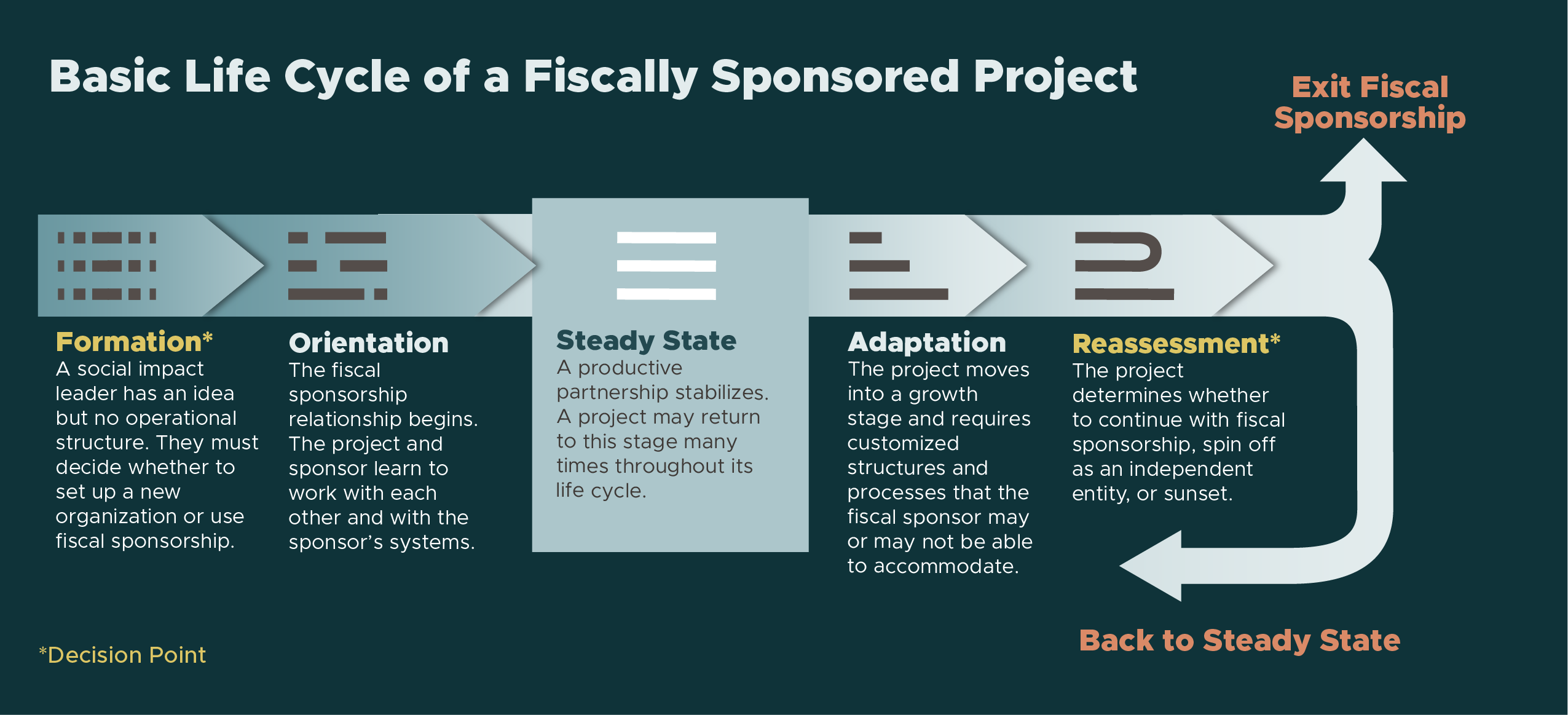Understanding the Fiscal Sponsorship Life Cycle

While fiscal sponsorship has existed for decades, its use has grown exponentially over the past several years. It’s now a critical part of the philanthropic sector’s infrastructure, as we’ve seen everywhere from pandemic relief efforts to initiatives designed to advance racial justice, defend voting rights, protect communities against the disastrous effects of climate change, and more. By effectively using fiscal sponsorship, social and environmental changemakers can often move move faster and more effectively in response to the intersecting crises our communities currently face.
Fiscal sponsorship happens when a larger and more established nonprofit (the fiscal sponsor) provides a legal and fiduciary home for a new or smaller nonprofit initiative doing work that aligns with the fiscal sponsor’s own mission. The new or smaller nonprofit initiative operates as a project hosted by the larger nonprofit, leveraging the latter’s economies of scale, experience, and expertise, even as it enjoys significant independence in its programming. Basically, the fiscal sponsor provides the infrastructure the budding initiative needs to operate as a fully compliant, mission-focused organization from day one. Thanks to the benefits of fiscal sponsorship, a variety of success stories have emerged over the past decade: Black Lives Matter and Co-Impact are just two examples of highly visible fiscally sponsored organizations that have used the structure to quickly begin work and achieve impact on a major scale.
Over the past 15 years, Arabella has worked alongside a variety of nonprofit fiscal sponsors to support the launch and operation of hundreds of such initiatives, each with its own goals, priorities, timelines, and visions for impact. While these fiscally sponsored initiatives vary enormously, we’ve observed that the vast majority nonetheless have some things in common. For one thing, experience teaches that fiscally sponsored initiatives tend to pass through five similar, big-picture stages of development as they grow and evolve. We think of these stages as the life cycle of a fiscally sponsored project.

The life cycle encompasses the full scope of an initiative’s creation and evolution. It begins with the decision to seriously pursue fiscal sponsorship, and it continues through the decision to sunset or maintain the initiative, either within the framework of fiscal sponsorship or as a new, independent entity. It also maps several of the important challenges and considerations that are likely to arise over time. By better understanding each stage, changemakers can maximize the benefits of fiscal sponsorship, anticipate challenges, and build their organizations and impact.
In our most recent white paper, we describe each of the five stages in greater detail, along with important questions changemakers should consider along the way. We hope that this framework will help clarify the fiscal sponsorship relationship and position initiatives for greater success. We invite you to read the full report and to reach out if you’d like to discuss fiscal sponsorship in more detail.
